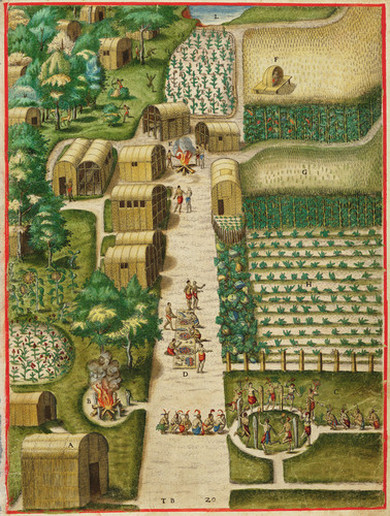Corn, Beans and Just Another Squash
10,000 BCE to 1600The cultural history of the pumpkin starts thousands of years ago with a small, round fruit the size of a hardball. The pumpkin was possibly the first plant in the Americas that people brought in from the wild, cultivated, and bred for human use. Its oldest seeds were excavated from the Oaxacan Highlands of Mexico and date from 10,000 to 8,000 years ago, 4,000 years earlier than corn or bean were domesticated. By the time Europeans arrived on North American shores in the late fifteenth century, the Cahuillas and Pueblos in the far Southwest, the Cherokees in the Southeast, the Ojibwas in the Great Lakes, the Mandans of the Great Plains, and the Iroquois in the Northeast all cultivated squashes and pumpkins. Yet while all forms of squash had a special status among Indians, the orange field pumpkin had no special status among squashes. American Indians from Canada to Florida cultivated, prepared, and thought about the field pumpkin no differently from any other squash.
|
Changing Name and Face of PumpkinsFrom 10,000 BCE to 1600, no one distinguished a pumpkin from other types of squash.
|
Secotan Indian Village
|
Caspar Plautius
|




